
Service hotline:
13533607738
18602592233
Welcome to 广东脊祥万岁健康管理有限公司!
最新资讯
Since the invention of microscopes, humans have tended to decompose things into smaller and smaller parts in medicine to study their roles and roles. For example, almost all of our anatomical books now believe that muscles are attached between two bones, with clear starting and ending points. When explaining the function of muscles, a single muscle on the skeleton is looked at in isolation, and its upper and lower connections are split. This is the so-called muscle independence theory.
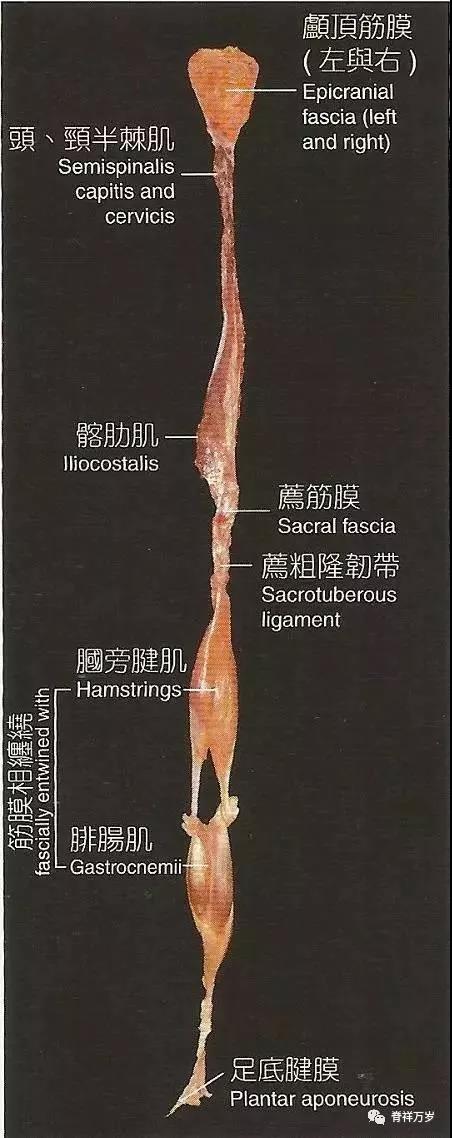
1. The attachment point of muscle is not the end of muscle. It travels along the track like a train (transmission of tension). The attachment point (starting and ending point) is only the "station" in the line.
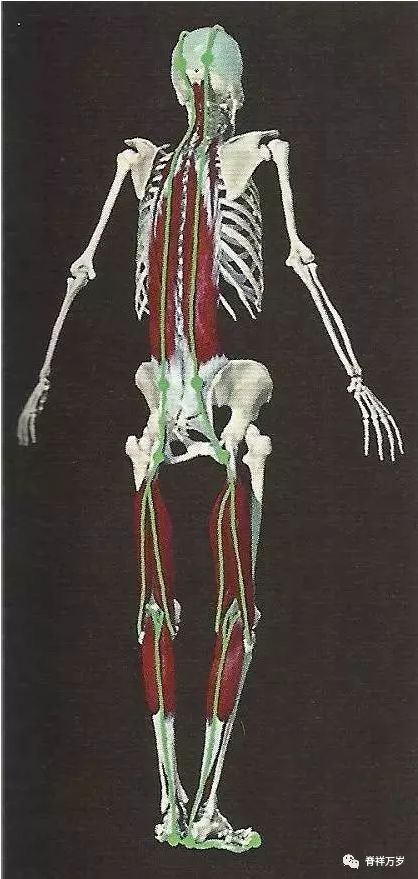
2. Musculoskeletal system is a double-sack structure. The inner sack wraps around the bone and the outer sack wraps around the muscle. "The human body actually has only one muscle, but it is packed in more than 600 fascial bags." When applying the treatment plan in the anatomical train, we regard the fascial meridian as a long tension line (i.e. fascial chain) through the outer bag, which can shape, change, restructure, stabilize and move joints and bones (i.e. the inner capsule bag).
3. The human body (skeletal muscle system) is a structure with balanced tension: the skeletal system forms a structural shape, while the muscles walking between the skeletons (myofascial chain) play a role in maintaining the structural shape, and the tension of the myofascial chain adjusts the balance of the whole structure. The ideal human body can balance the internal total tension with the corresponding total contraction force, and make the operation of the human body reach the most effective state. Any part of it changes its tension for a variety of reasons, leading to another part of the whole fascial chain (or the whole chain) changes in tension - shortening or prolonging (imagine you are wearing a tight mesh like Spider-Man, we pick up a corner at will, then the rest of your body will be involved), for a long time, it will be. It produces pain and changes in body structure.

4. Jump out (but do not deny) the traditional theory of muscle independence, regard the human body as a whole, and find the root of the problem from the macro and overall perspective. For example, we usually take the strategy of relaxing the rhomboid muscle in the pain along the medial scapula, but the pain reappears within a few days after the pain is relieved. Why? Because we haven't found out the reason for this --- rhombic creatine pain is the result of long stretching --- we relax it, only to increase its compensatory capacity, and the real reason (possibly) is that the serratus anterior muscle is too tight. So we should not only comfort the "victims", but also find out the "perpetrators" and punish them so that they can learn to behave well.
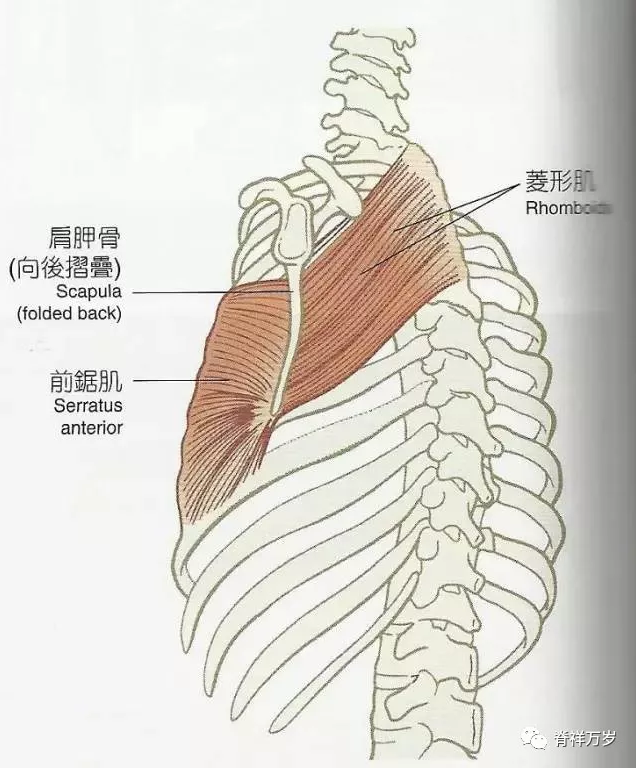
5. Based on the theory of myofascial chain, we can find out the law of human compensation and explain why muscles compensate in this way. There are 12 myofascial meridians in the human body, including:
Thread
SFL Shallow Front
SBL shallow dorsal line
LL side line
Helical line
SL spiral line
FFL Front Line
BFL dorsal functional line
Arm line
SBAL Shallow back arm line
DBAL Deep back arm line
Sfal Shallow forearm line
Dfal Deep forearm line
core
DFL Deep Front
Shallow dorsal line

Postural function
Supporting the body in full upright extension to avoid the tendency to curl up and buckle
motor function
Except for knee downward bending, all the motor functions of the shallow dorsal line are to produce straightening.
High proportion of slow muscle fibers
Common postural compensation:
Restriction of ankle dorsiflexion, excessive knee extension, shortening of hamstring muscle (to replace deep external rotation), pelvic forward movement, suboccipital constraints lead to excessive extension of upper cervical spine, discontinuity of eye-spinal movement, etc.
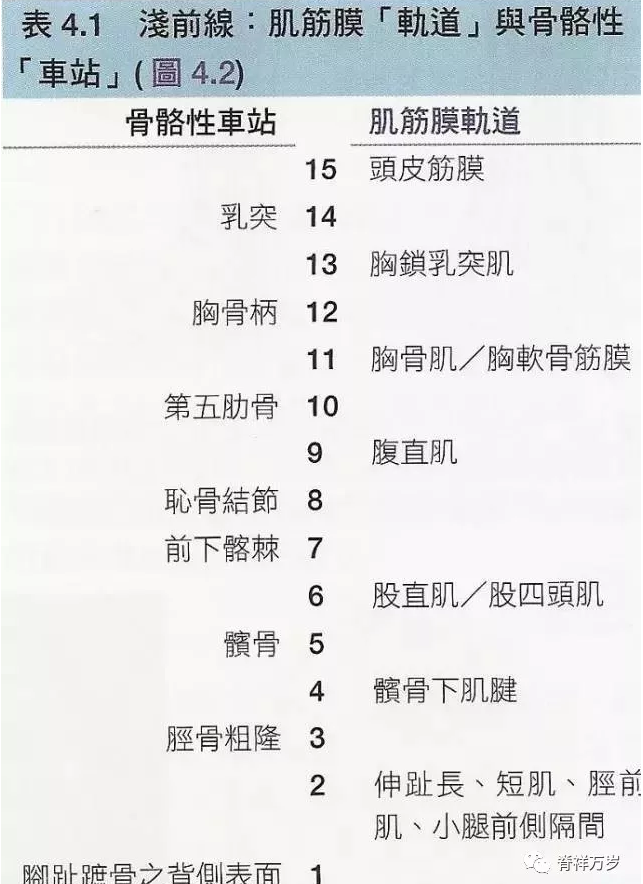
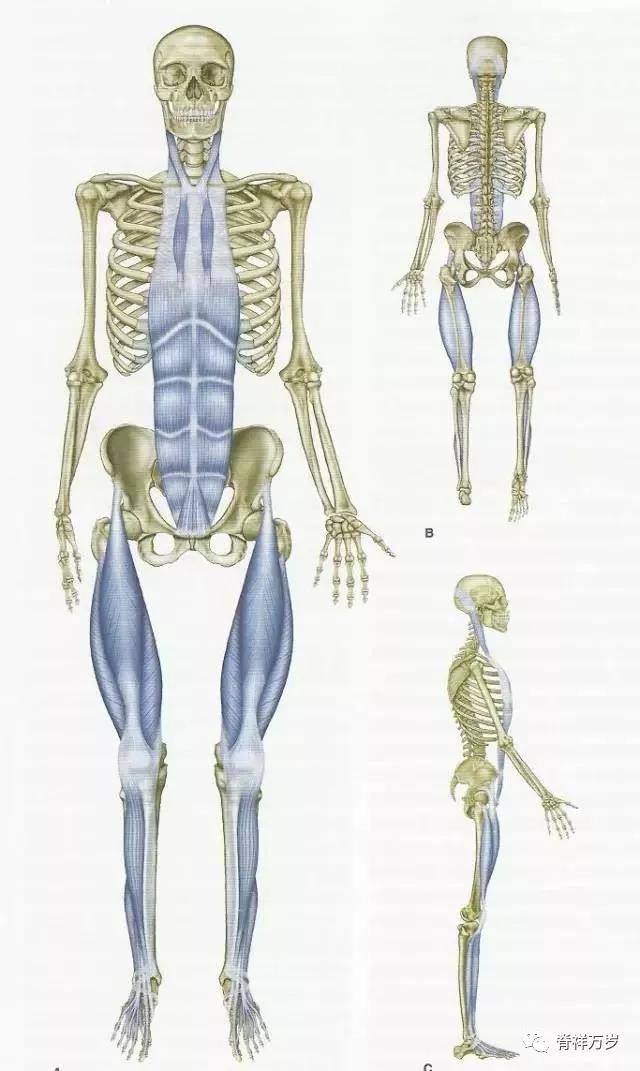
Postural function
Balance the shallow back line and maintain the balance before and after the body.
motor function
Causes torso and hip flexion, knee straightening, and dorsal flexion.
Fast muscle fibers with high proportion
Lateral line
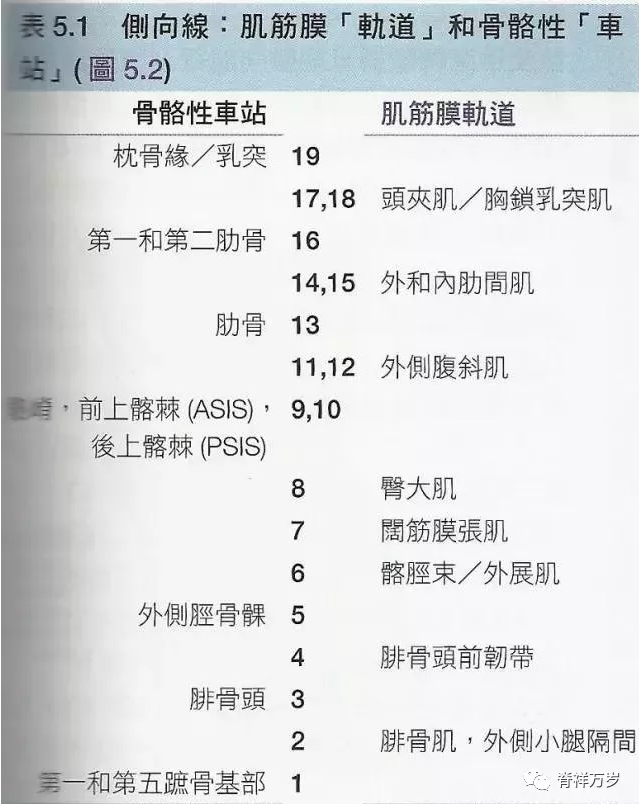
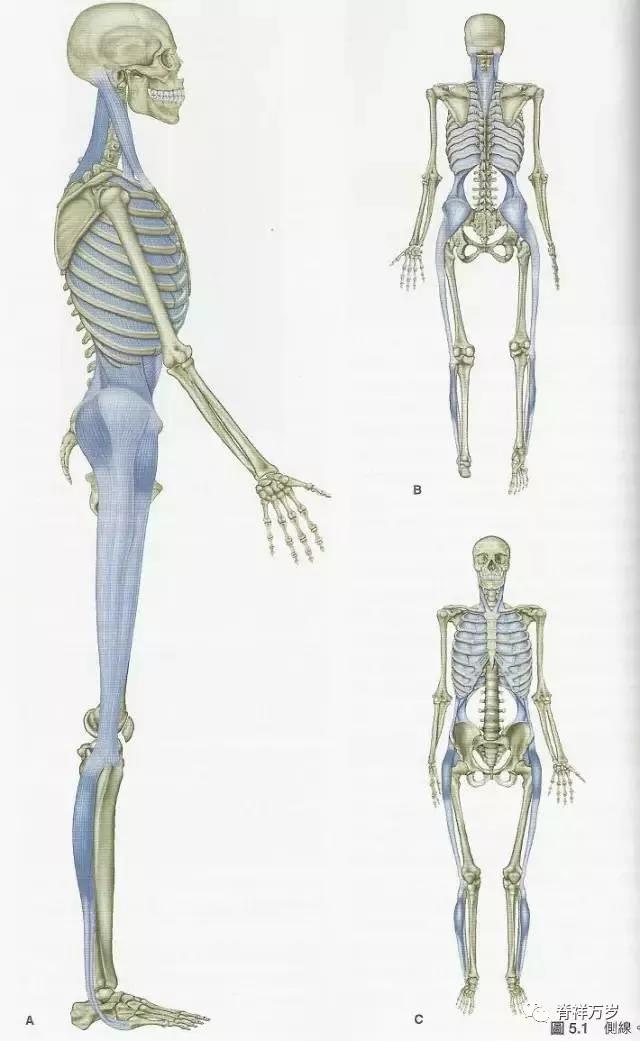
Postural function
In order to balance the front and back directions as well as the left and right directions posturally, adjust the strength between other meridians, fix the lower limbs and trunk in a coordinated manner, and avoid the result of loosening in any activity using the upper limbs.
motor function
Participate in lateral bending, hip abduction and foot valgus.
Spiral line
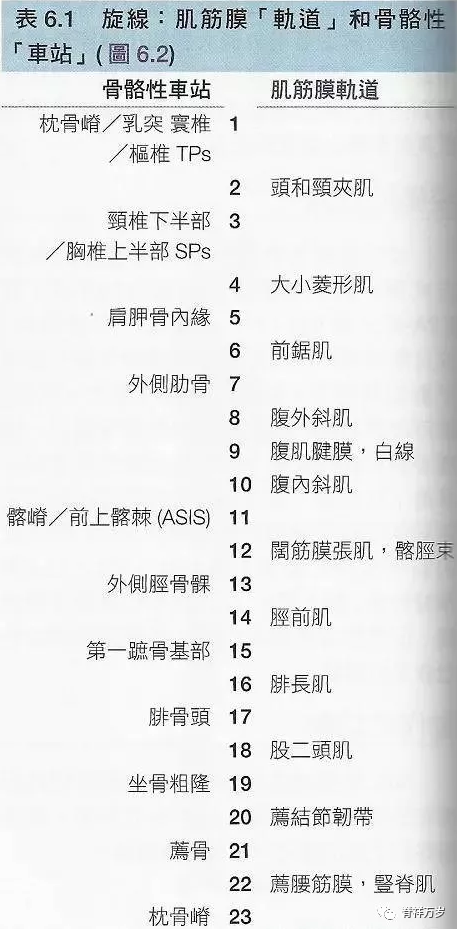
Posture function
Encircle the body in a spiral manner to help maintain balance in all directions.
Function of action
Create and regulate torsion and rotation of the body and maintain stability of the trunk and lower limbs during centrifugal and isometric contractions to avoid disintegration of rotation.
Upper arm line
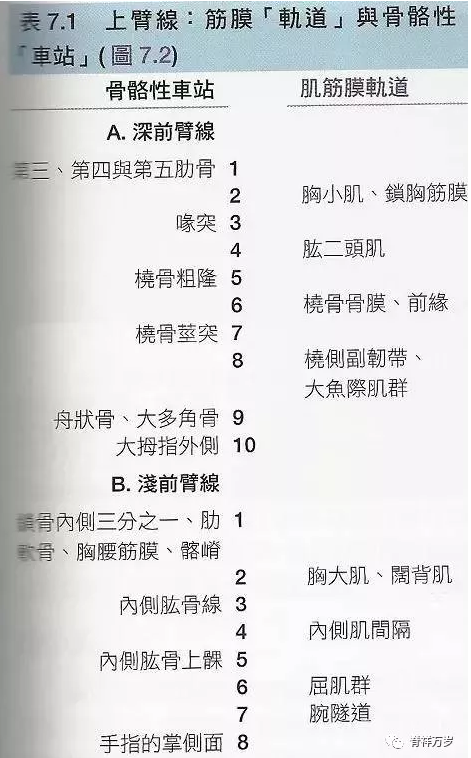
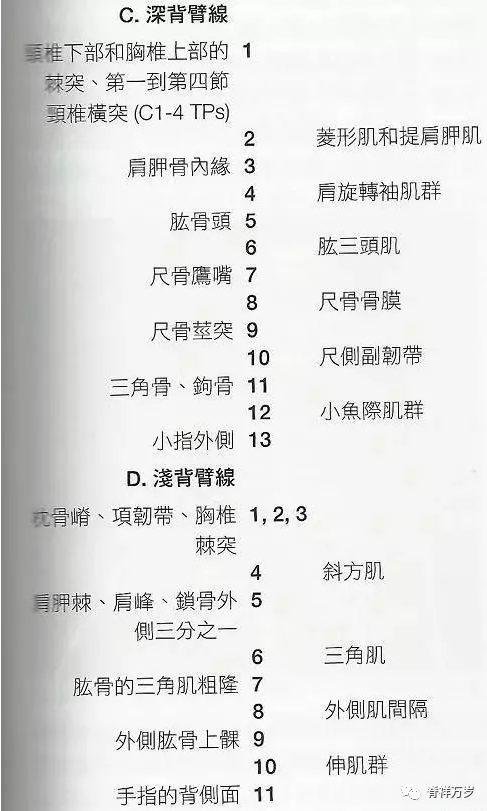
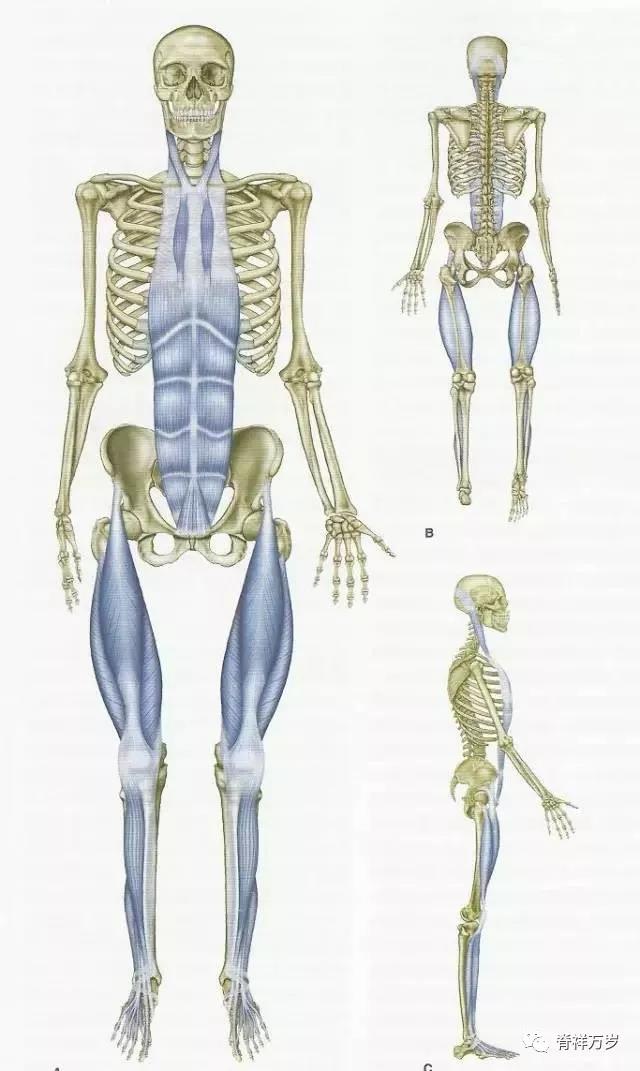
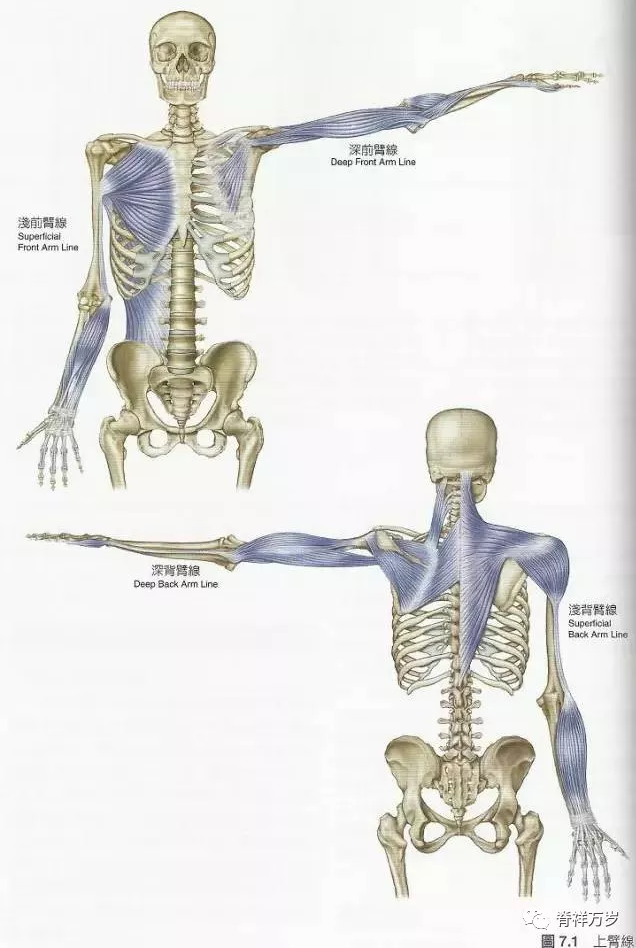
Function line
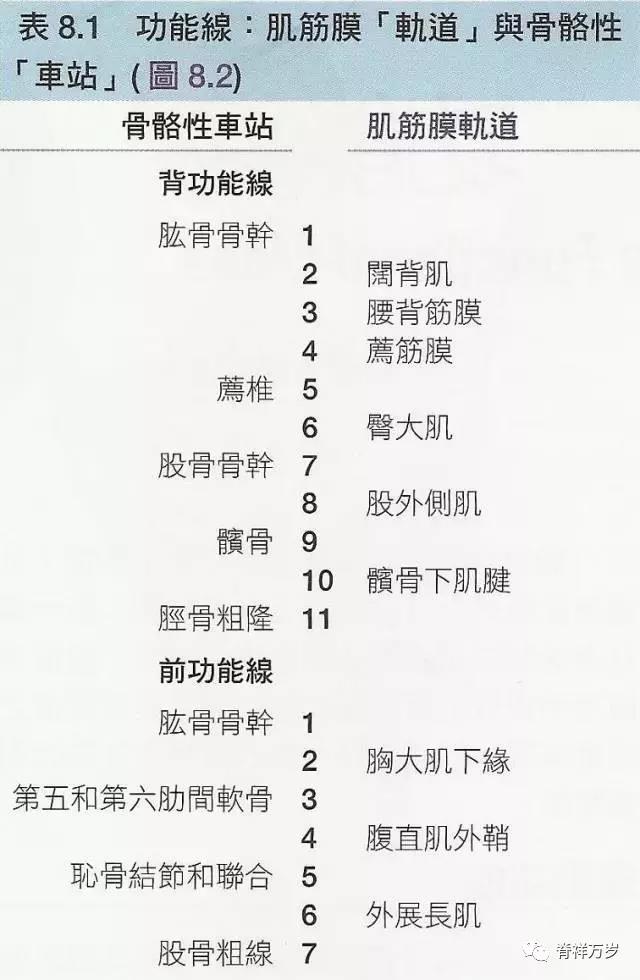
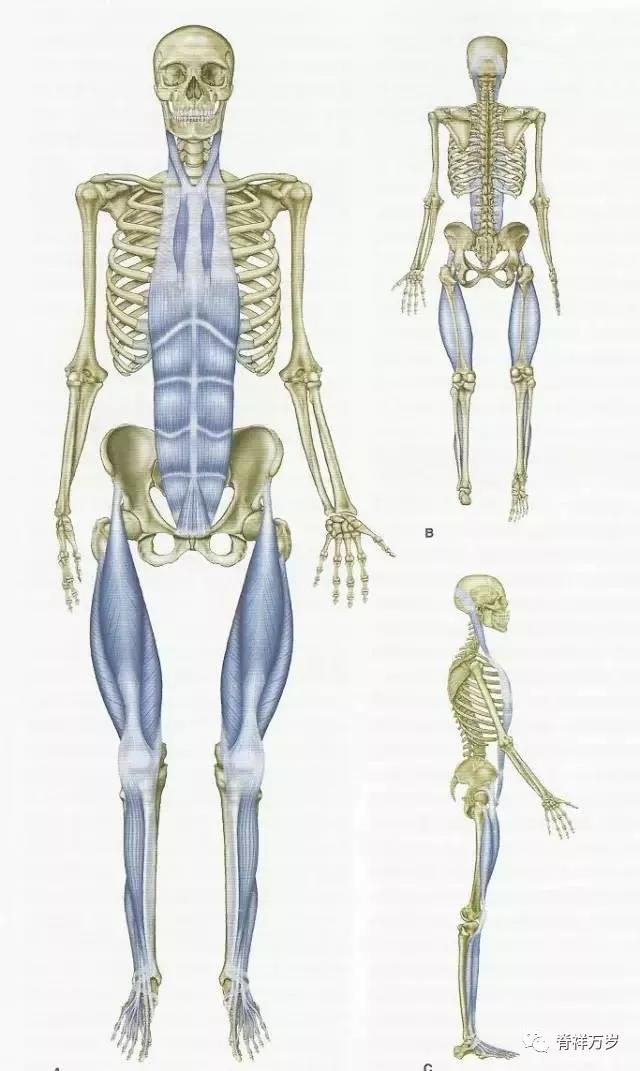
motor function
These meridians can extend the moment by crossing the body and connecting it to the limbs in the opposite waistband.
Deep front

Postural function
Lift the internal radian, support the lumbar spine from the front, stabilize the chest during breathing, and balance the fragile neck with the heavy head above.
Motor function
The high proportion of slow muscle fibers keeps the core structure stable, which makes the structure of the surface of the body and the lines and skeletal muscles more easily and effectively operate.
6. Anatomical Trains and Chinese Medicine
If you are familiar with the anatomical train and understand the TCM syndrome differentiation and acupuncture at the same time, you will marvel that there are many similarities between the two theories.
(1) Traditional Chinese medicine pays attention to the whole, thinking that people are a whole, and problems in some parts of the body can not be headache doctor's head, because headache is usually the "result", and "cause" may be on the foot. Myofascial chain scholars believe that the fascia (muscle) surrounding the human body is continuous, and the tension is transmitted on the fascial chain. Any muscle on the fascial chain may cause changes in the tension of the same or the other end of the muscle. For example, the tension of plantar fascia can cause pain in the back of the head and occipital region, or on the contrary, the release of the fascia in the back of the head and occipital region can increase the activity length of hamstring muscle and the angle of ankle dorsiflexion.
(2) Traditional Chinese medicine holds that Yin and Yang are the unity of opposites. Only when Yin and Yang are balanced, can the human body achieve a state of harmonious operation. Over-Yin or over-Yang will lead to diseases of the human body. In the theory of fascial chain, the skeletal muscle system of human body is a structure with balanced tension, that is, tension and tension are balanced. If the muscle (fascia) in the same chain is atresia and contraction, it will lead to another muscle (fascia) atresia and prolongation, thus breaking the balance between yin and yang, slowly leading to pain or imbalance.
Slowly observe the meridians of myofascial and traditional Chinese medicine, you will find that some meridians are coincident or similar, such as the front, back and side lines almost coincide with the stomach meridian, bladder meridian, and gallbladder meridian. The acupoint selection and treatment of acupuncture and moxibustion include proximal acupoint selection, distal acupoint selection, lumbar and dorsal committees seeking and so on, which is similar to the operation of fascial chain used to explain and deal with compensation.